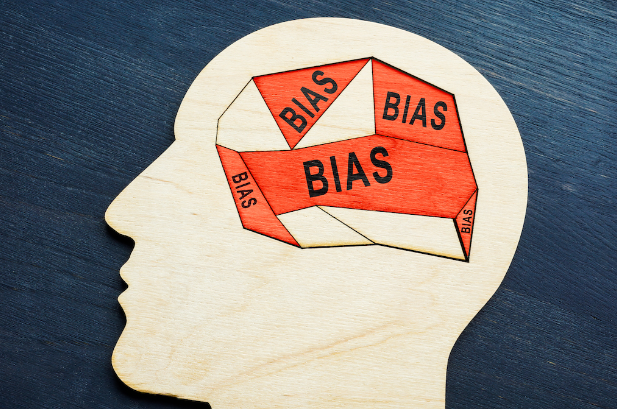
Behavioral finance explores the psychological influences and biases that affect financial decision-making, often leading individuals to make irrational choices about money.
This field of study is crucial in understanding consumer behaviors, particularly in areas such as debt repayment and homeownership.
By applying principles of behavioral finance, we can gain insights into why people make certain financial decisions and how these decisions can be optimized for better outcomes.
Key Principles of Behavioral Finance

Behavioral finance challenges the traditional assumption that consumers always make rational decisions based on available information. Instead, it recognizes that emotions, cognitive biases, and social factors often influence financial decisions. Some key principles include:
- Loss Aversion: This concept suggests that people feel the pain of losses more acutely than the pleasure of gains. In financial decision-making, this often manifests in an aversion to selling investments at a loss, even when it might be the best strategic move.
Similarly, homeowners might resist selling a property at a price lower than what they paid, even if doing so would improve their financial situation【Source: Investopedia】.
- Mental Accounting: People tend to compartmentalize money into different “accounts” based on subjective criteria, such as the source of the money or its intended use. For instance, a consumer might treat a tax refund differently than a regular paycheck, often spending it more freely.
In terms of debt repayment, someone might prioritize paying off a smaller debt to “close an account” rather than focusing on a debt with a higher interest rate【Source: The Balance】.
- Herd Behavior: This occurs when individuals follow the actions of a larger group, often assuming the group knows something they do not. This can lead to market bubbles or irrational spending and borrowing habits.
For example, during housing booms, many consumers might rush to buy homes due to a fear of missing out (FOMO), regardless of whether it is a financially sound decision【Source: NerdWallet】.
- Overconfidence Bias: Overconfidence in one’s knowledge or abilities can lead to risky financial behavior, such as over-borrowing or investing heavily in speculative assets.
Homebuyers, for example, might overestimate their ability to manage mortgage payments, leading to financial strain or even foreclosure if their financial situation changes【Source: Forbes】.
Impact of Behavioral Finance on Debt Repayment Decisions

Understanding these behavioral finance principles can shed light on consumer debt repayment behaviors:
- Debt Snowball vs. Debt Avalanche: Behavioral finance explains why some people prefer the debt snowball method (paying off smaller debts first) over the debt avalanche method (paying off debts with the highest interest rates first). |
The sense of accomplishment from eliminating smaller debts quickly can provide a psychological boost, motivating further debt repayment, even if it’s not the most cost-effective strategy in the long run【Source: CNBC. - Procrastination in Debt Repayment: Cognitive biases like present bias, where individuals favor immediate gratification over long-term benefits, can lead to procrastination in paying off debt.
This often results in consumers carrying balances longer than necessary, incurring more interest charges and fees【Source: The Financial Diet】.
Behavioral Finance and Homeownership Decisions

Behavioral finance also influences decisions around homeownership:
- Emotional Attachment to Property: Homebuyers often form an emotional attachment to a property, which can lead to irrational financial decisions.
This might include overpaying for a home or refusing to sell a property that no longer meets their financial needs due to sentimental reasons【Source: Zillow. - Anchoring Bias: When buying or selling a home, consumers might rely too heavily on the first piece of information they receive (the “anchor”), such as an initial asking price, and fail to adjust their expectations accordingly.
This can lead to poor financial decisions, like accepting a higher mortgage rate or overextending financially to purchase a home【Source: Investopedia】.
Strategies to Mitigate Behavioral Biases

To make more rational financial decisions, consumers can adopt the following strategies:
- Awareness and Education: Being aware of common biases and understanding how they impact decision-making is the first step toward mitigating them.
- Automated Financial Tools: Utilizing automated tools for savings, investments, and debt repayment can help counteract procrastination and present bias.
- Consulting Financial Advisors: Working with a financial advisor can provide objective guidance and help consumers avoid emotionally driven decisions.
- Setting Clear Financial Goals: Establishing clear, long-term financial goals can provide a roadmap, reducing the influence of short-term biases and emotional decision-making.
Leveraging Behavioral Finance for Better Financial Outcomes
Understanding behavioral finance principles allows consumers to recognize and mitigate biases that can negatively impact financial decisions.
By acknowledging these psychological factors and adopting strategies to counteract them, individuals can make more informed choices regarding debt repayment and homeownership, ultimately achieving better financial outcomes.

Ready to improve your credit score and secure better loan terms? Check this message – make it align with the content of the blog article.
Work with First Lien HELOC (FLH) to explore your options and use our HELOC Calculator to see how you can leverage your credit for favorable mortgage and HELOC rates.
Start your journey toward financial empowerment today!
Disclaimer: This article is for informational purposes only and does not constitute financial advice. Always consult with a financial professional to determine the best strategy for your individual situation.

